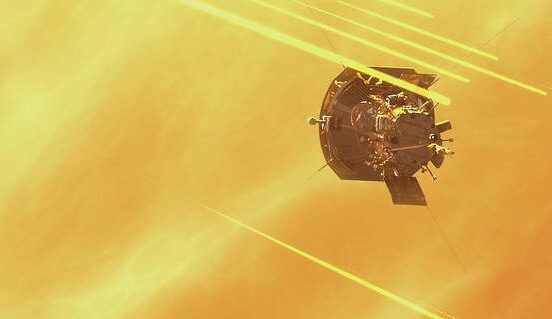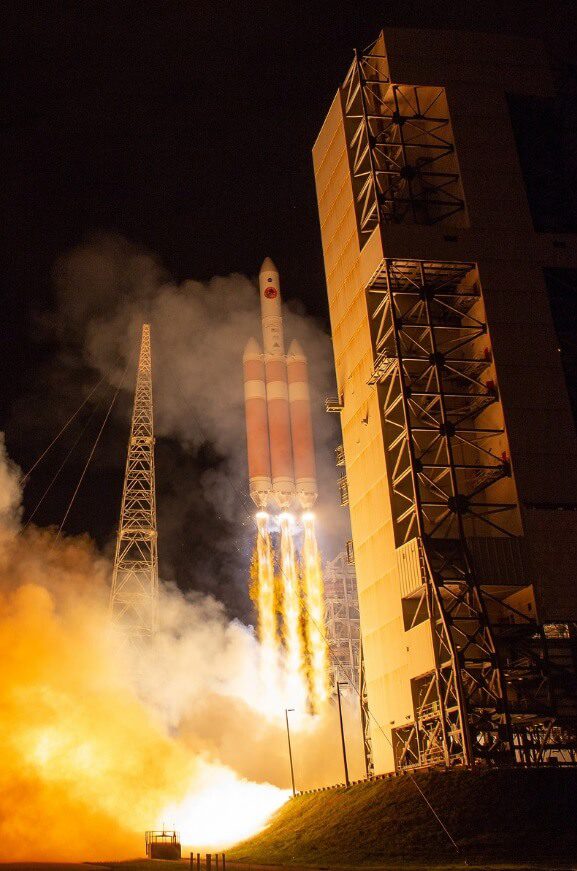While the old politically incorrect joke about a stupid country (insert a preferred nation) attempting a space mission to land on the Sun (they were going to go at night) might be intentionally ridiculous, NASA is attempting to do something close. After a one-day delay caused by the launch vehicle’s helium pressurant alarm, NASA’s Parker Solar Probe was launched by a United Launch Alliance (ULA) Delta IV Heavy (Delta IVH-4050H) at 0731 GMT on 12 August 2018 from Cape Canaveral, Florida. The mission is primarily to investigate the solar wind and how solar magnetism might generate and channel it. And to do so it has to voyage very close to the Sun.
NASA’s Parker Solar Probe was named after Dr Eugene Parker, who first predicted the solar wind’s existence in 1958 by suggesting that its super-hot corona (atmosphere) would allow particles enough energy to escape the Sun’s gravity. After Dr Parker made his prediction, the wind was officially detected by the Soviet Luna 1 spacecraft in 1958. Subsequently NASA’s Mariner 2 spacecraft detected two distinct streams of solar wind: a slow stream travelling at approximately 215 miles per second and a fast stream zipping through space at twice that speed. Then, in 1973, the origins of the fast solar wind were identified. X-ray images of the corona taken from Skylab, the USA’s first manned space station, revealed that the fast wind spews from coronal holes, which are dark, comparatively cool regions on the Sun.
In its seven-year mission, the Parker Solar Probe spacecraft is designed to sample solar particles and measure the Sun’s magnetic fields to prove the origin of the two streams of solar wind and how they flow away, down magnetic field lines. The spacecraft will fly to within 8.5 solar radii (6.1 million km/3.8 million miles) of the sun’s visible surface and will be within the outer parts of sun’s corona, which has a temperature gradient starting at millions of degrees – hundreds of times hotter than the surface of the Sun. In doing so, the spacecraft will become the fastest ever human-built object at 430,000 mph. Given it is will be dangerously close to the Sun, it needs a carbon composite heat shield 2.5m in diameter to protect it from temperatures up to 2,500 K, and has been radiation proofed from bursts of charged particles.

Illustration of Parker Solar Probe close to Sun. Courtesy: NASA
To get to the Sun, the trajectory is to make fly-bys of Planet Venus. While fly-bys usually speed up a spacecraft, in this case Venus is being used as a braking system to slow down its heliocentric orbital velocity to achieve a much lower pass distance. The need to decelerate was also the reason why the Delta IV Heavy launch vehicle was used. This rocket would normally have been very much oversized for this spacecraft which weighs in at only 635kg – about one twentieth the size of spacecraft it normally carries.








